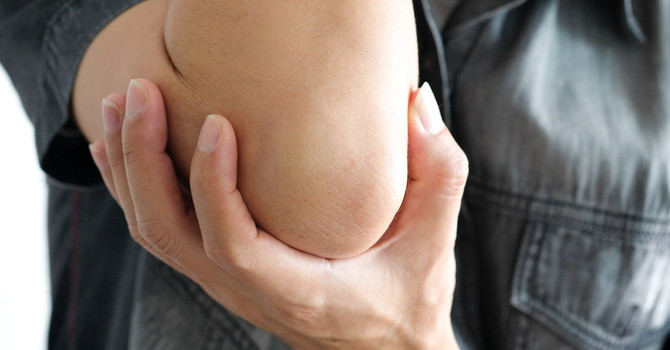
For eleven years I have focused a lot of my attention in practice on injury prevention for runners.
There are many key aspects in the prevention of running injuries, but always keep in mind that injuries can still occur. It is a hard sport and has high physical demand on the body.
We can implement strategies to reduce the likelihood of injury, and increase the recovery rate if the injury does occur. That is the mindset the runner needs to abide by when competing or training for long distance events, in my humble opinion. Even the professional runners, who are young with perfect bodies, top level coaches, the best equipment, endless amounts of bodywork and treatment, still get injured.
I truly believe that anyone who sets out to perform an endurance sport, should take the time and effort to understand their body and how they can prevent potential injury. This will allow you to enjoy the great benefits of the sport, and cross the finish line.
With the goal of helping you enjoy the sport and cross the finish line, I went out to interview some of the experts in the community on running and endurance training to give us their perspective on injury prevention.
Nicole Boger of TriBox HQ
Boca Raton Triathletes Group
Dr. Ross Borzykowski (Radiologist)
Before I dive into the details of what those experts discussed, let’s discuss how Over-Use Injuries occur in the body. Stopping this cycle is the key to preventing injuries, so let’s dive in:
The Cumulative Injury Cycle
The Cumulative Injury Cycle represents the process in which over-use injuries and pain occur. This cycle is not limited to running but will be related to running for this article.
The process begins with Overwork, such as the long-distance running, especially running that is not technically sound. Running combined with a sedentary lifestyle or other repetitive activities leads to Weak & Tight Muscles.
These weak and tight muscles lead to excessive Friction, Pressure, and Tension to the local muscles, ligaments, tendons, and fascia. In turn, this results in Decreased Circulation and Swelling and Hypoxia (lack of oxygen) to the area.
Due to this hypoxic state, the formation of adhesions and scar tissue occurs to the area which decreases the function of the local structures. This becomes a vicious cycle that over time results in pain and injury.
Most running related injuries are cumulative which means it occurs over time.
The Keys to preventing this vicious cycle from becoming an injury
• Reduce the “Overwork” with proper equipment (running shoes, etc), proper technique, optimal rest, and a gradual increase in mileage (avoid too much, too soon).
• Corrective Exercises (strengthening and mobility work) to prevent muscular imbalances
• Body work such as foam rolling, Chiropractic, Massage, Active Release Technique, Physical Therapy, etc to prevent adhesions, lack of oxygen to the cells, etc.
Below you will find more details of how to prevent injuries, but this gave you a taste of how we strategically address the Cumulative-Injury Cycle to prevent it culminating in injury.
I highly recommend watching the videos of the experts I interviewed to get all of the details. However, below is a synopsis of what we discussed and learned from our FB Live Interviews.
TriBox HQ with Nicole Boger
• TriBox creates Faster, Stronger, more Powerful, more Resilient endurance athletes.
• Hip Stability is a key factor in preventing lower extremity, hip and low back injuries from running. Nicole demonstrated some key exercises to help with this common issue faced by runners.
• IT Band Syndrome is one of the most common running related injuries Nicole sees in her athletes, and always provides corrective and performance exercises to prevent the direct and indirect causes of IT Band Syndrome.
• Strategically designed exercise program can increase performance and prevent injury. One of the most common misconceptions by runners is that running will train the right muscle groups and prevent running related injuries. Running actually magnifies your physical limitations and can lead to injury without proper corrective activation/strengthening and mobility work.
Fleet Feet with Nick Stump
• Shoe Selection to match your foot type is vital to injury prevention for the runner. Knowing if you have a over-pronated foot, neutral foot, or Supinated/high arch foot is instrumental in proper shoe selection.
• Nick states that the thought process on shoe selection such as stability shoes and neutral shoes are changing and the experts are getting a better understanding of how to design the shoes properly.
• Shoe Inserts can be an affordable and highly effective option for runners to put in their running shoes to help prevent foot, ankle, knee, hip and low back stress. He has seen amazing results from runners utilizing shoe inserts.
• Biomechanical Assessments are key when deciding which type of shoe will be ideal for the runner. Just picking a shoe off of the shelf is a leading cause of over-use injuries in runners.
• Knowing when your running shoes are overly worn is vital in replacing them with new shoes. This will help in optimal performance and injury prevention.
Boca Raton Triathletes Group
One of the amazing aspects of joining a group, are the resources they provide to help you train optimally and avoid injury. Going it alone can be difficult to keep up to date with all of the information needed to manage your training and avoid the pitfalls of over-use.
Some of the resources that BRT and other groups offer are the following:
• Running, Swimming and Triathlon Coaches
• Physicians and Healthcare Specialists
• Shoe Store Resources
• Cycling Shop Resources
• Nutrition Specialists
• Training Programming
• Educational Workshops
• Personal and Performance Trainers
• Endless Experience as a Group in Training and Performance
Imaging Details for Running Injuries with Dr. Ross Borzykowski (Radiologist)
Stress Reactions vs Fractures
Stress reactions differ from stress fractures, such that a fracture shows a fracture line in the bone. The fracture is a more advanced injury to the bone than a reaction.
Stress reactions and fractures may or may not show up on X-ray, but X-Ray is the best option at first since it is much easier and affordable than MRI Imaging.
If symptoms persist and there are no findings on X-Ray, an MRI may be indicated to rule in or out a stress reaction of stress fracture.
A positive finding of either a stress reaction or fracture will require rest and evaluation/management by an orthopedist. Based on the severity of the bone injury, your treatment and rest will differ.
If you are having lower extremity pain from running, and it persists for longer than a week or so, evaluation by a physician is recommended. Based on the evaluation, the doctor may recommend imaging to differentiate between a muscle strain or bone injury. This is a key distinction, since bone injury will be more significant and follow a much different treatment plan than muscle strains.
We did discuss muscle injuries, and based on the grade of the muscle strain, you will also have a different time table or healing and treatment plan. Below are the details of muscle strains.
Muscle Strains and The Grading System of Severity
Grade I Muscle Strain
In grade I muscle strain, the muscle or tendon is overstretched. Small tears to muscle fibers may or may not occur. You may have mild pain with or without swelling. Grade I strain is also called mild muscle strain.
Grade II Muscle Strain
Also called moderate muscle strain, grade II strain occurs when the muscle or its tendon is overstretched with more of the fibers torn but not complete. Symptoms may include marked pain with swelling. The area of injury is tender. Bruising may occur if small blood vessels at the site of injury are damaged as well. The movement may be difficult because of pain.
Grade III Muscle Strain
Grade III strain, or severe muscle strain, is the most serious among the three grades of muscle strains. Most of the muscle fibers are torn. In some cases, the muscle is completely torn or ruptured. Pain, swelling, tenderness and bruising are usually present. Movement is usually difficult.
Moderate and severe muscle strains should be seen by a qualified health care provider. For grade I muscle strain, simple home remedies, such as applying RICE (rest, ice, compression, elevation) therapy may be just enough to manage symptoms.
Lastly, we discussed imaging findings for Lumbar Disc Injuries and how to manage them. I recommend watching our interview with Dr. Borzykowski and also read the below article we have on everything low back pain.
Lumbar Disc Injuries
Visit Here for all the info you’d like to read about on Low Back Pain and Disc Injuries
During our month-long “investigation” into injury prevention for runners, two injuries popped up frequently, so I wanted to do a deep dive into Plantar Fasciitis and IT Band Syndrome.
The good news is, correcting many of the physical limitations or biomechanical issues associated with these two conditions, will also help you prevent other foot/ankle, knee and hip conditions from running.
Preventing Plantar Fasciitis
Plantar Fasciitis is one of the most common causes of heel pain in runners. It involves pain and inflammation of a thick band of tissue, called the plantar fascia, which runs across the bottom of your foot — connecting your heel bone to your toes.
Plantar fasciitis causes stabbing pain that usually occurs with your very first steps in the morning. Once your foot limbers up, the pain of plantar fasciitis normally decreases, but it may return after long periods of standing, getting up from a seated position, or running/walking. [1]
The main physical causes of this condition are:
- Tight calves will increase tension on the plantar fascia.
- Altered foot function: Excessively flat or high arches.
- Lack of big toe extension- Upward movement of the big toe.
- Tight hip flexors will reduce the ability to use gluteals in ‘push off’ phase of the stride, hence increasing the work load on the plantar fascia and calves.
- Reduced gluteal and hamstring strength will again increase the demand for the calves and plantar fascia, predisposing to overload of these structures.
Other non-biomechanical reasons for the condition can be improper running technique, worn-out or improper running shoes, and increasing mileage too fast. If you feel any of the non-biomechanical reasons may be an issue, please confer with your Friends In Training coaches to address them.
From a physical standpoint, the best way to prevent Plantar Fasciitis is to obviously correct the causes by performing stretches and exercises to correct any of this above dysfunction. Stretching for the Gastrocnemius (upper calf), Soleus (lower calf), hip flexors, and the Plantar Fascia.
Secondly, you need to be evaluated to determine if you have excessively flat or excessively high arches. If you have flat feet, an orthotic may be beneficial. With high arches, manual therapy can help reduce the rigidity and tightness of the foot/arch. Lastly, strengthening of the glutes and hamstrings (along with hamstring flexibility) are vital to proper push-off mechanics during running.
Preventing IT Band Syndrome
IT Band Syndrome is one of the most common causes of knee pain in runners. It is an overuse injury caused by repetitive friction of the iliotibial band across the Lateral Epicondyle (see image below). This syndrome presents as lateral (outside) knee pain due to the tightness of the ITB and hip abductors. As a result of movement of the band during flexion and extension of the knee and hip, a tight band could be responsible for the inflammation in the knee or even the hip, or along the IT Band.
The main physical causes of this condition are:
- Tight IT Band.
- Altered foot function: Excessively flat feet cause the lower leg to internally rotate excessively, adding a stretch tension to the IT Band.
- Decreased Glute Medius/Maximus function.
- Overactive TFL muscle due to lack of Gluteus Medius function
- A weak or inactive Vastus Medials (VMO). This is the inside muscle group of the quadriceps and tends to become weak on people.
- Medial (inward) knee migration during walking/running.
- Leg length discrepancy.
- Tightness of hamstrings/Quads/Calves
Other non-biomechanical reasons for the condition can be improper running technique, worn-out or improper running shoes, hill running, canted running surfaces, and increasing mileage too fast. If you feel any of the non-biomechanical reasons may be an issue, please confer with your running store or coach.
From a physical standpoint, the best way to prevent IT Band Syndrome is to correct the causes by performing stretches and exercises to correct any of this above dysfunction. Stretching or foam rolling for the IT band, Hamstrings, Calves, and Quads are necessary.
Secondly, you need to be evaluated to determine if you have excessively flat arches or excessive pronation of the ankle. If you have flat feet, an orthotic may be beneficial. Lastly, strengthening of the hip stabilizers (glutes) and proprioception training of the ankle are recommended.
My Keys to Injury Prevention
• Understanding of how over-use injuries occur
• Proper Equipment
• Proper Training Program
• Proper Form/Technique
• Corrective Exercises
• Body Work
• Rest and Recovery
• Proper Nutrition
My recommendation is to use this “Keys to Prevention” checklist and make sure you have or are addressing these areas of injury prevention. If you are falling short on any of these, you can reach out to your coach, training group, training friends, or myself to find a resource that can help you.
Train Hard and Have Fun!



